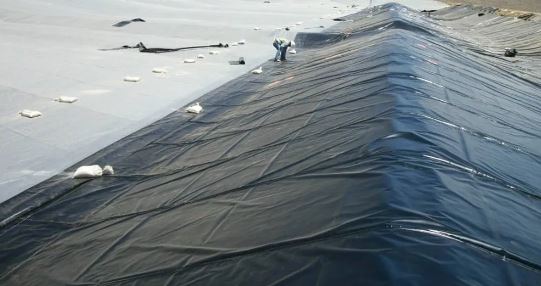Mining operations often require robust containment solutions to manage water, chemicals, and waste. Geomembrane liners play a crucial role in ensuring environmental protection, water conservation, and operational efficiency. In this comprehensive guide, we explore the factors to consider when selecting the right Geomembrane Liners for Mining applications.
Understanding Geomembrane Liners
Geomembrane liners are synthetic membranes used for containment applications in various industries, including mining. These liners are made from flexible materials such as HDPE (High-Density Polyethylene), LLDPE (Linear Low-Density Polyethylene), PVC (Polyvinyl Chloride), and EPDM (Ethylene Propylene Diene Monomer). They provide impermeable barriers that prevent the leakage or seepage of liquids and gases.
Factors to Consider
1. Material Composition
The choice of geomembrane material depends on the specific requirements of the mining operation. HDPE Liner for Mining offer excellent chemical resistance and durability, making them suitable for acidic and corrosive environments. LLDPE liners are more flexible and resistant to punctures, while PVC liners are cost-effective and easy to install.
2. Thickness
The thickness of the geomembrane liner is critical for ensuring adequate protection against punctures, tears, and chemical exposure. Thicker liners provide greater strength and durability, but they may also be more expensive. It's essential to balance cost considerations with the level of protection required for the mining application.
3. Seam Integrity
The integrity of seams and welds is paramount in preventing leaks and ensuring the effectiveness of the liner system. High-quality welding techniques, such as extrusion and hot wedge, are essential for creating strong and reliable seams that can withstand the harsh conditions of mining operations.
4. Chemical Compatibility
Mining processes often involve the use of harsh chemicals and acids that can degrade geomembrane materials over time. It's crucial to select liners that are compatible with the chemicals present in the mining environment to ensure long-term performance and integrity.
5. UV Resistance
Exposure to UV radiation can degrade geomembrane liners over time, leading to premature failure. UV-resistant liners are essential for outdoor mining applications exposed to sunlight, ensuring extended service life and performance.
Applications in Mining
Geomembrane liners find various applications in mining, including:
- Tailings Storage Facilities: Lining tailings ponds to prevent leaching of contaminants into the surrounding environment.
- Heap Leach Pads: Containing leach solutions and preventing contamination of groundwater.
- Evaporation Ponds: Managing water evaporation and brine concentration in mineral processing operations.
Conclusion
Choosing the right Geomembranes for Mining operations is crucial for ensuring environmental compliance, operational efficiency, and long-term cost savings. By considering factors such as material composition, thickness, seam integrity, chemical compatibility, and UV resistance, mining companies can select liners that meet their specific needs and provide reliable containment solutions.





Comments